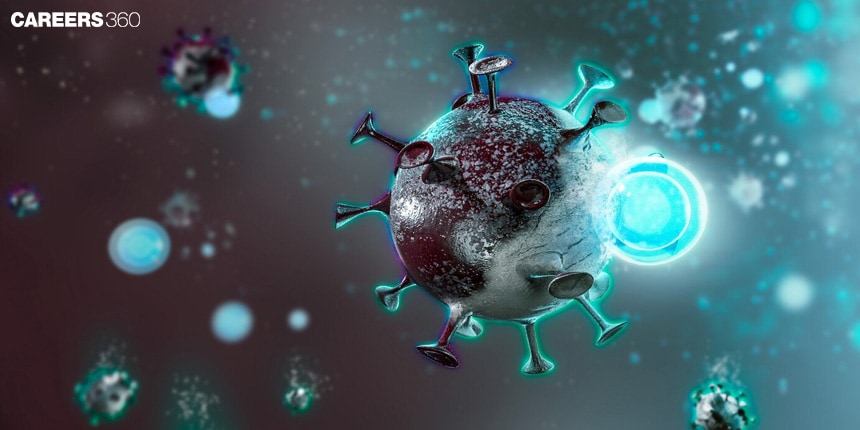Viroids: Definition, Meaning, Types, Examples, Diseases, Symptoms
Viroids are the smallest known infectious agents, consisting solely of a short strand of circular, single-stranded RNA without a protein coat. They are distinct from viruses due to their simple structure and ability to replicate autonomously within host cells. Viroids primarily infect plants, causing significant agricultural damage by interfering with gene regulation. Structurally, their RNA is highly base-paired, forming a compact, rod-like shape, which can be visualized in viroid diagrams. This is one of the important chapters of biology in chapter Biological Classification.
This Story also Contains
- Definition of Viroids
- Structure and Composition of Viroids
- Classification and types of Viroids
- Transmission and Spread of Viroids
- Symptoms and Impact of Viroid Infections

Definition of Viroids
Viroids are small, single-stranded circular RNA molecules without a protein coat, thus making them rather different from viruses and any other infectious agent. Viroids are composed only of a single-stranded RNA genome measuring between 250-400 nucleotides long, and it has been proven that such a viroid causes infectious diseases in plants.
The shape of the viroids is unique, as the RNA takes the shape of a very highly base-paired rod-like appearance that can also be visualized with a viroid diagram
Viroids do not encode proteins but multiply autonomously by using the plant host cell enzymes. Viroids lie in their ability to cause disturbance in cellular processes, such as RNA silencing mechanisms leading to certain specific diseases in plants.
Also Read:
Structure and Composition of Viroids
Viroids represent single-stranded RNA molecules, usually with lengths of 246 to 401 nucleotides, folded into a stable base-paired secondary structure. This unique structure of viroids lacks a coat protein and does not code for any proteins. Viroids are fundamentally distinct from viruses and other pathogens. The meaning behind the term viroids lies in their simplicity, relying on host enzymes to replicate.
The extent of their RNA sequence and secondary structure variability often decides their pathogenicity, and hence is very important in understanding the role viroids play in initiating plant diseases.
Classification and types of Viroids
Based on their genomic structure, there exist two families of viroids: Pospiviroidae and Avsunviroidae.
Pospiviroidae: They have a rod-like secondary structure and are capable of self-replication in the nucleus.
Avsunviroidae: A family distinguished by their circular secondary structure and replication in chloroplasts.
Examples of major Viroid Families
Pospiviroidae: This family of viroids contains Potato spindle tuber viroid, Citrus exocortis viroid, and Tomato chlorotic dwarf viroid.
Avsunviroidae: This family contains Avocado sunblotch viroid and Peach latent mosaic viroid.
Transmission and Spread of Viroids
The transmission of viroids occurs through different mechanisms, of which the most prominent is direct infection from infected plant materials (seeds, pollen, vegetative propagation: cuttings, grafting). Transmission from one plant to the other may also occur because of mechanical contact during agricultural practices like pruning or harvesting.
Several factors drive the infection dynamics of viroids in plants. The ability of the viroid to transmit itself is determined by its stability and potential for survival outside host cells at various environmental temperatures and humidity conditions. Another is the susceptibility of the host plant species itself and the presence or absence of insect vectors.
Symptoms and Impact of Viroid Infections
Infections with viroids often clinically manifest in peculiar symptoms, such as stunted growth, leaf distortion, and other anomalies with flowering and fruit development. This is due to the action of viroid replication, which disrupts RNA silencing mechanisms within the plant.
Viroids can cause more severe effects, including chlorosis, necrosis, and reduced vigour, which leads to heavy agricultural losses. This means that the viroids above indicate the nature of these pathogens to be RNA molecules that produce serious damage across plant kingdom.
Economic Effects of Viroids Infections result in lower crop yield and lower quality. Infected plants often grow deformed fruits and are comparatively more prone to other pathogen infections. It is imperative to understand the structure of viroids, and hence, their replication model, to design suitable control strategies.
Sanitary practice, the use of planting materials free from viroid infection, and early detection techniques, such as viroid diagrams or diagnostic tools, among others, are of paramount importance. Viroids are RNA-based pathogens. So, early diagnosis and control play a very essential role in reducing their agricultural effects.
Also read:
Recommended video for Viroids
Frequently Asked Questions (FAQs)
The control would thus include the use of viroid-free planting materials, resistant plant varieties, and avoidance of mechanical transmission during agricultural practices.
Viroids replicate autonomously using host plant enzymes. They take over cellular machinery to transcribe their RNA, which then undergoes rolling circle replication to produce multiple copies.
Symptoms include the following: stunted growth; leaf distortion, which might appear in the form of chlorosis or necrosis; poor quality and yield in fruits.
Molecular techniques that amplify and identify viroid RNA in plant tissues include the Reverse Transcription Polymerase Chain Reaction and Northern blotting.